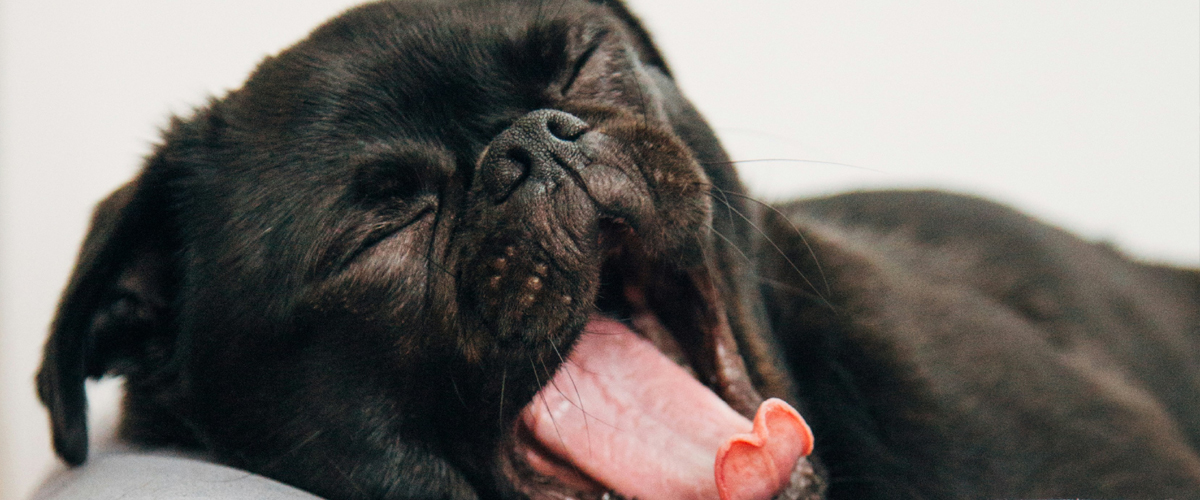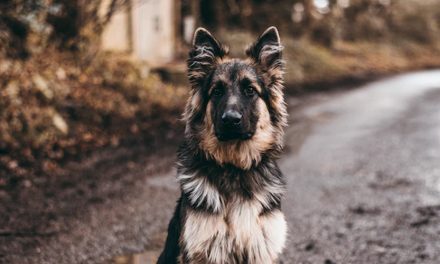A night of peaceful sleep not only recharges us but also helps in maintaining our overall physical and mental well-being. For dog owners, ensuring their furry friends’ rest is undisturbed is a significant part of responsible ownership. However, it’s not uncommon for dogs to experience disturbed sleep patterns, leaving pet parents puzzled and, at times, sleep-deprived.
DISTURBED SLEEP
In this detailed guide, we’ll explore the various facets of disturbed dog sleep, why it happens, and what you can do to help your four-legged friend get the rest they need.
UNPACKING DISTURBED SLEEP PATTERNS
When we talk about ‘disturbed sleep patterns’ in dogs, we’re referring to any deviation from a typical, restful night’s sleep. This can manifest in a range of behaviors, from restless movements to outright insomnia.
DISORIENTATION UPON WAKING
Some dogs may exhibit disorientation upon waking up, especially if they’re older or have underlying sensory impairments. Imagine waking up to a world that doesn’t quite make sense, where shadows appear as threatening figures, and your hearing isn’t as sharp as it used to be. For senior dogs, this is a common occurrence that can lead to increased anxiety and reduced sleep quality.
COGNITIVE IMPAIRMENT AND SENSORY DECLINE
Old age comes with its challenges, and cognitive decline can impact a dog’s sleep quality. Alzheimer’s-like symptoms can lead to confusion during the sleep-wake cycle, resulting in bouts of disorientation during normal sleeping hours. Similarly, sensory decline, such as poor vision or hearing, can heighten feelings of vulnerability, making it difficult for dogs to relax during the night.
DAY-NIGHT REVERSAL
Day-night reversal is when a dog’s sleep-wake cycle shifts, resulting in prolonged periods of sleep during the day and increased activity at night. This can occur due to various reasons, but a lack of daytime stimulation and activity is often at the root of the issue.
WHY LACK OF DAYTIME STIMULATION MATTERS
Dogs are diurnal creatures by nature, meaning they are most active during the day. Engaging in activities that align with their natural inclination to be active during the day helps them establish a regular sleep schedule. Without appropriate stimulation during daylight hours, dogs can become lethargic and sleep more, disrupting their nighttime routine.
THE ROLE OF DAYTIME ACTIVITY
Regular daytime exercise and mental activity are essential for maintaining a healthy sleep schedule for your dog. Daily walks, playtime, and training sessions can help expel excess energy and stimulate their mind, ensuring they are ready to rest when the sun sets.
WAKING AT NIGHT
Dogs that wake up frequently during the night can be a challenge for pet owners. Such disruption can include waking up and vocalizing, excessive movement, or needing to go outside to relieve themselves.
NOCTURNAL VOCALIZATION
Barking, howling, or whining at night can be distressing for both the dog and their owners. This behavior can be a result of various factors, ranging from simple attention-seeking to underlying medical issues. Understanding the root cause is the first step in finding a solution.
INCREASED ACTIVITY
Some dogs may experience temporary bouts of increased activity at night due to environmental factors, such as noises, lights, or changes in the household. Ensuring a quiet, dimly lit sleep environment can help minimize these disturbances.
WHAT TO DO WHEN SLEEP IS A STRUGGLE
Recognizing that your dog has a sleep issue is only the beginning. The next step is to address the problem head-on with targeted strategies that promote healthy sleep habits.
ASSESSING THE LIVING ENVIRONMENT
Begin by assessing your dog’s living environment. Is there anything in the home that could be causing stress or excitement? From noisy gadgets to household activities, identifying and managing environmental stressors can significantly improve sleep quality.
CREATING A CANINE SLEEP SANCTUARY
Designate a quiet, dark, and comfortable area where your dog can sleep. This space should be as free from interruptions as possible and serve as a consistent sleep environment.
CONSULTING WITH A VET
If your dog’s sleep disturbances persist, it is advised to seek professional help. A veterinarian can help rule out any underlying health issues that could be affecting your dog’s sleep. They may also offer guidance on calming supplements or medications that could be beneficial.
POTENTIAL MEDICAL CAUSES
Medical conditions such as pain, neurologic disorders, or endocrine imbalances can lead to sleep disturbances. An assessment by a vet can lead to a timely diagnosis and appropriate treatment.
THE IMPORTANCE OF ROUTINE
Creating and maintaining a consistent daily routine can help regulate your dog’s sleep patterns. From mealtimes to walks, everything should follow a predictable schedule.
THE ROLE OF RELAXATION
Incorporate relaxation techniques into your dog’s routine, especially before bedtime. This may include gentle massage, calming music, or using pheromone diffusers to create a relaxing atmosphere.
ENGAGING THE SENSES
Stimulate your dog’s senses during the day with a variety of activities that correspond to different types of stimulation.
SENSORY ACTIVITIES
Engage your dog’s sense of smell with interactive feeding toys, their hearing with training sessions, and their vision with playtime. A well-rounded sensory experience can tire them out in a healthy way.
TRAINING AND BEHAVIOR MODIFICATION
For some dogs, sleep issues may be due to behavioral patterns that have developed over time. Training and behavior modification can rewire these patterns and encourage better sleep.
POSITIVE REINFORCEMENT
Use positive reinforcement techniques to reward desired sleep behaviors, such as quiet and calm nighttime behavior.
CRAFTING A DAILY SLEEP DIARY
Keep track of your dog’s sleep patterns and any associated events or behaviors in a sleep diary. This can provide valuable insights for addressing sleep disturbances.
LOGGING SLEEP AND WAKING TIMES
Note your dog’s bedtime, the duration of sleep, and any waking periods. Also, record food intake, exercise, and bathroom breaks to identify any patterns.
CONCLUSION
Our canine companions are beloved members of our families, and just like us, they benefit from a good night’s sleep. Understanding and addressing disturbed sleep patterns in dogs is key to ensuring their well-being and happiness. By identifying the root causes, implementing strategies to promote healthy sleep, and seeking professional guidance when needed, pet owners can help their dogs enjoy restful nights and energetic days. Your dog may not be able to thank you with words, but a wagging tail and a playful spirit will certainly express their gratitude for a good night’s sleep.
Credit: Original Photo by charlesdeluvio on Unsplash








